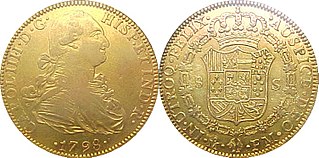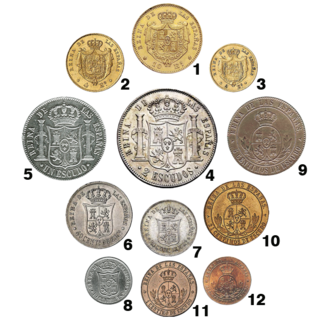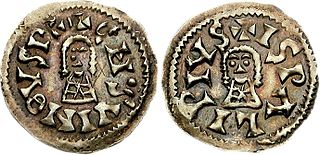 W
WThe céntimo or cêntimo was a currency unit of Spain, Portugal and their former colonies. The word derived from the Latin centimus meaning "hundredth part". The main Spanish currency, before the euro, was the peseta which was divided into 100 céntimos. In Portugal it was the real and later the escudo, until it was also replaced by the euro. In the European community cent is the official name for one hundredth of a euro. However, both céntimo and cêntimo are commonly used to describe the euro cent.
 W
WColumnarios are silver coins that were minted by Spain from 1732 to 1773 throughout its new colonies in present-day Ibero America. While the majority of columnarios were struck in Mexico, smaller mints existed in Guatemala; Lima, Peru; Santiago, Chile; Potosí, Bolivia; and Colombia. The base denomination is an 8 reales coin. Other minor denominations included 4 reales, 2 reales, 1 real, and 1/2 real. The 8 reales coin is the predecessor to the American dollar. Before the United States Mint was in production, columnarios circulated, along with other coinage, in the US colonies, as legal tender until the middle of the 19th century.
 W
WCornado is the common name of several Castilian coins made of copper or billon, minted from the time of Sancho IV of Castile until that of the Catholic Monarchs.
 W
WThe dobla, including dobla castellana (excelente), gran dobla, dobla de la Banda, dobla cruzada, dobla alfonsi and dobla almohade, was the name of various Iberian gold coins between the 11th and 16th centuries, ranging in value from 2-870 maravedis, depending on the year. The name originated as the "double maravedi", a term used by Castilians for the Muslim dinar, when the maravedí was re-valued as equivalent to the Muslim half-dinar, or masmudina, by Ferdinand III. However, years later, the dobla became various new coins, and at times, a dobla was the same as the newer coins enrique or castellano. In general, a dobla was a valuable gold coin, while the maravedi was de-valued into silver or rarely copper forms. In the 16th century, the dobla was replaced by the ducado, then by the escudo as the standard gold coin of Spain.
 W
WThe Spanish dollar, also known as the piece of eight, is a silver coin of approximately 38 mm (1.5 in) diameter worth eight Spanish reales. It was minted in the Spanish Empire following a monetary reform in 1497. It was widely used as the first international currency because of its uniformity in standard and milling characteristics. Some countries countermarked the Spanish dollar so it could be used as their local currency.
 W
WThe doubloon was a two-escudo gold coin worth approximately $4 or 32 reales, and weighing 6.766 grams of 22-karat gold . Doubloons were minted in Spain and the viceroyalties of New Spain, Peru, and Nueva Granada. As the Spanish escudo succeeded the heavier gold excelente as the standard Spanish gold coin, the doubloon therefore succeeded the doble excelente or double-ducat denomination.
 W
WThis article covers euro gold and silver coins issued by the Royal Spanish Mint. It also covers rare cases of collectors coins minted using other precious metals. This article however, does not cover either the Spanish €2 commemorative coins or the Spanish peseta commemorative coins.
 W
WThe silver real was the currency of the Spanish colonies in America and the Philippines. In the seventeenth century the silver real was established at two billon reals or sixty-eight maravedís. Gold escudos were also issued. The coins circulated throughout Spain's colonies and beyond, with the eight-real piece, known in English as the Spanish dollar, becoming an international standard and spawning, among other currencies, the United States dollar. A reform in 1737 set the silver real at two and half billon reals or eighty-five maravedís. This coin, called the real de plata fuerte, became the new standard, issued as coins until the early 19th century. The gold escudo was worth 16 reales de plata fuerte.
 W
WThe escudo was either of two distinct Spanish currency denominations.
 W
WThe peseta was the currency of Spain between 1868 and 2002. Along with the French franc, it was also a de facto currency used in Andorra.
 W
WThe coinage of the Visigoths was minted in Gaul and Hispania during the early Middle Ages, between the fifth century and approximately 710.
 W
W